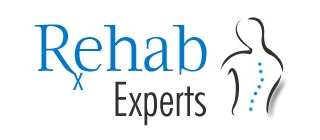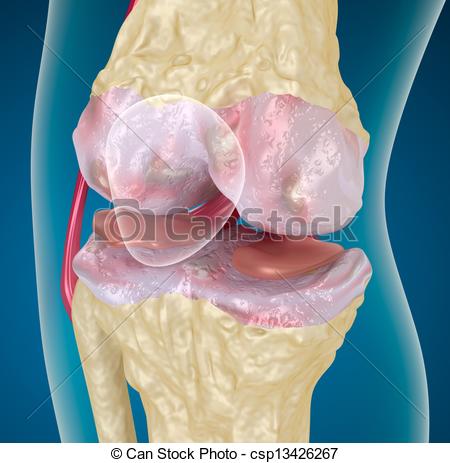Osteoarthritis (OA) is one of the most common forms of arthritis. It is a chronic condition in which the material that cushions the joints, called cartilage, breaks down. This causes the bones to rub against each other, causing stiffness, pain and loss of joint movement. The cause is not fully understood.
Causes
Cartilage is a firm rubbery substance that covers the end of bones and acts as a cushion or shock absorber between bone ends. Osteoarthritis causes the progressive breakdown and wearing away of the cartilage, leaving the bone ends unprotected. As this occurs, the joint can become painful, stiff, difficult to move and eventually, swollen.
Osteoarthritis can be classified as primary or secondary. Primary osteoarthritis has an unknown cause but is generally associated with ageing. It is sometimes referred to as “wear and tear” arthritis. Secondary osteoarthritis is the destruction of cartilage from a known cause. Conditions that lead to cartilage loss include injury, obesity, gout, infection, congenital abnormalities (abnormalities present at birth) or joint surgery.
Graphic courtesy of A. Bonsall and MedicineNet.com
Osteoarthritis can occur at any time of life but the incidence increases with age. It usually affects people over 40 years of age. Approximately 50 percent of people over 60 years of age are affected in at least one joint. Virtually all people over the age of 80 years suffer from osteoarthritis to some extent.
Osteoarthritis usualy occurs in the nads and weight-bearing joints such as hips, knees, feet and spine. It does not usually affect the shoulder, wrist, elbow or jaw unless as a result of unusual stress or injury.
Common risk factors for developing osteoarthritis include:
- Age
- Being overweight
- Female gender – the condition is more common and more severe in women
- Heredity – the condition, particularly where it affects the hands and fingers, tends to run in families.
Some occupations that involve repetitive heavy activity may damage joints and make them more prone to osteoarthritis later in life.
Signs and symptoms
The most common signs and symptoms of osteoarthritis include:
Pain
Pain is the most common symptom of osteoarthritis. It is usually made worse by moving the joint or placing weight on it, and it is usually relieved by rest. As the condition progresses and inflammation develops, pain may become constant.
Stiffness
Stiffness of the affected joint is often noticed first thing in the morning, and after resting.
Swelling
Swelling, which is sometimes warm to touch, may be noticeable in an arthritic joint.
Deformity
Deformity can occur with osteoarthritis due to bone growths and cartilage loss. Bone growths in the end joints of the fingers are called Heberden’s nodes. Bouchard’s nodes are bone growths in the middle joints of the fingers. Degeneration of knee cartilage can result in the outward curvature of knees (bow- leggedness).
Crepitus
Crepitus (a crackling sound or grating feeling) may be noticed when an arthritic joint is moved. This is caused by bone rubbing against bone or roughened cartilage.
Diagnosis
Osteoarthritis is often able to be diagnosed by its characteristic symptoms of pain, decreased movement and/or deformity. Osteoarthritis maybe confirmed with an x-ray or MRI scan. Common findings include narrowing of the joint space between bones, a loss of cartilage and bone spurs or bone growths.
Blood tests may be used to exclude other possible conditions but they cannot diagnose osteoarthritis.
Physical Therapy
Physical therapy and exercise are important components in the treatment of osteoarthritis and can help you achieve and maintain optimal mobility. Exercise helps to increase flexibility, maintain range of motion of the joint, strengthen surrounding muscles, decrease associated inflammation, and improve overall fitness. The physical therapist can also make recommendations regarding the use of assistive equipment (such as a cane or walker) and the proper footwear to make walking less painful. The therapist can also guide you on the use of cold or heat therapy to manage joint pain and swelling.
Before beginning an exercise program, it is important that you consult with your physician and an experienced physical therapist. The wrong exercises can place undue stress on the joint and exacerbate your condition.
Our team in Rehab Experts provides comprehensive and dynamic physical therapy home services to adult patients with musculoskeletal problems resulting from osteoarthritis of the shoulders, hips, knees, and spine. Rehab Experts also specializes in rehabilitative care for individuals who have undergone total joint replacement surgery.
Through a team approach that includes the patient, therapist, and physician, its specially trained physical therapists develop individualized programs to help patients achieve their goals and reach their maximum functional potential. They offer a broad spectrum of individualized therapeutic exercise in tandem with the most up-to-date manual techniques, modalities, exercise equipment, and treatment approaches.
Reference:
Hospital For Surgery http://www.hss.edu/osteoarthritis-rehabilitation-exercise.asp
Arthritis Foundation http://www.arthritis.org/conditions-treatments/disease-center/osteoarthritis/
Southern Cross Healthcare Group https://www.southerncross.co.nz/aboutthegroup/healthresources/medicallibrary/tabid/178/vw/1/itemid/132/osteoarthritis-symptoms-diagnosis-treatment.aspx

